Nouns or pronouns can be governed by prepositions. These are called the objects of the prepositional phrase. Such nouns or pronouns are put in one of three cases:
A preposition may govern one or more cases.
- If a preposition governs one case, that case will be accusative, dative or genitive.
- If a preposition governs two cases, those cases will be accusative and genitive.
- If a preposition governs three cases, those cases will be accusative, dative and genitive.
![]()
The Nominative case never takes a preposition.
DETERMINING THE CASE:
In the examples below, prepositions expressing motion or rest are illustrated.
As a general rule, prepositions expressing motion to take the accusative
case, prepositions expressing motion from take the genitive case, and
prepositions expressing rest or lack of motion take the dative case.
- accusative — motion to
- genitive — motion from
- dative — mere position or absence of motion
With a little imagination, the illustrations can be made to work for other ideas of motion. Think of the left side of the illustration as the accusative side and the right side as the genitive side. Wherever the arrow ends indicates the case to be used. If there is no motion, then there will be an "X" within the circle, and in these instances, the dative case is used.
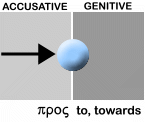 |
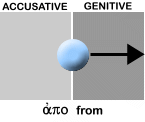 |
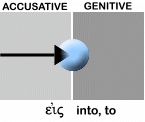 |
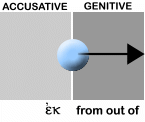 |
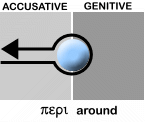 |
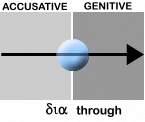 |
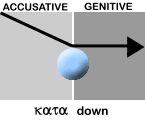 |
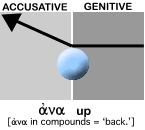 |
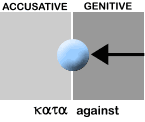 |
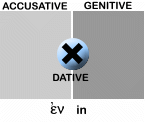 |
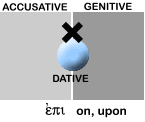 |
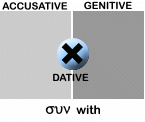 |



